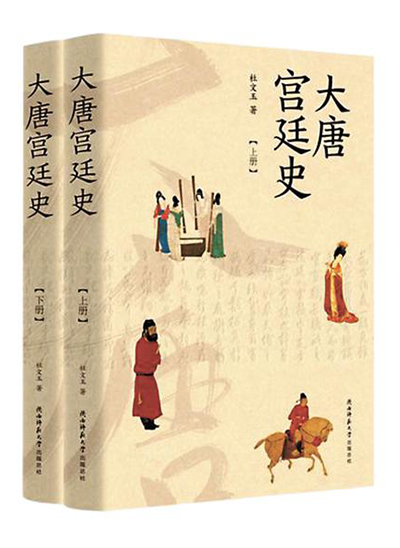Presenting a real history of Tang court

A History of the Imperial Court of the Tang Dynasty
Research on court history not only involves traditional dynastic political history but also connects with emerging social gender history. However, the primary goal in the field is to move away from the novelistic stereotypes typical of court anecdotes. Scholars of court history should focus on the court system, the daily life of court figures, palace structure layout, and power struggles, vividly delineating court life, political maneuvering, and dynastic vicissitudes and lifecycles.
A History of the Imperial Court of the Tang Dynasty, by Du Wenyu, a professor from the School of History and Civilization at Shaanxi Normal University (SNNU), is a panoramic work that comprehensively restores the historical reality centered on the court of the Tang Dynasty (618–907).
Although chronologically written, the book places appropriate emphasis on each stage. Court life not only encompasses the brutal struggle for power, but also aspects of daily routine, entertainment, and education. Court education inevitably involves institutional establishment, official management, and curriculum. The position of gongjiao boshi [scholars for educating imperial maids], initially assumed by eunuchs, gradually saw increasing occupation by scholars, including female scholars.
History is both static and dynamic. The concubine system in the Tang Dynasty was not invariable, nor did it change arbitrarily according to the whims of the emperors. This reflects the correlation between court affairs and imperial power, necessitating an understanding that considers the political backdrop of each period. When Emperor Gaozong intended to promote concubine Wu Zetian, he faced opposition from courtiers. Conversely, Emperor Xuanzong, upon ascending the throne, immediately reformed the concubine system with the political aim of eliminating the threat to imperial power.
Compared to the court histories of other ancient Chinese dynasties, the Tang Dynasty’s court history has its own set of particularities. First, court life was characterized by a rich variety of activities and the compatibility of diverse cultures. Second, concubines interfered in political affairs more frequently than in other eras, corroborated by the fact that Wu Zetian, Shangguan Wan’er, Empress Wei, and Princess Changle were highly involved in politics and influenced court dynamics and historical development. Third, the eunuch institution was well-established, and eunuchs controlled the imperial guards.
Hu Yaofei is an associate professor from the School of History and Civilization at SNNU.
Edited by YANG LANLAN
